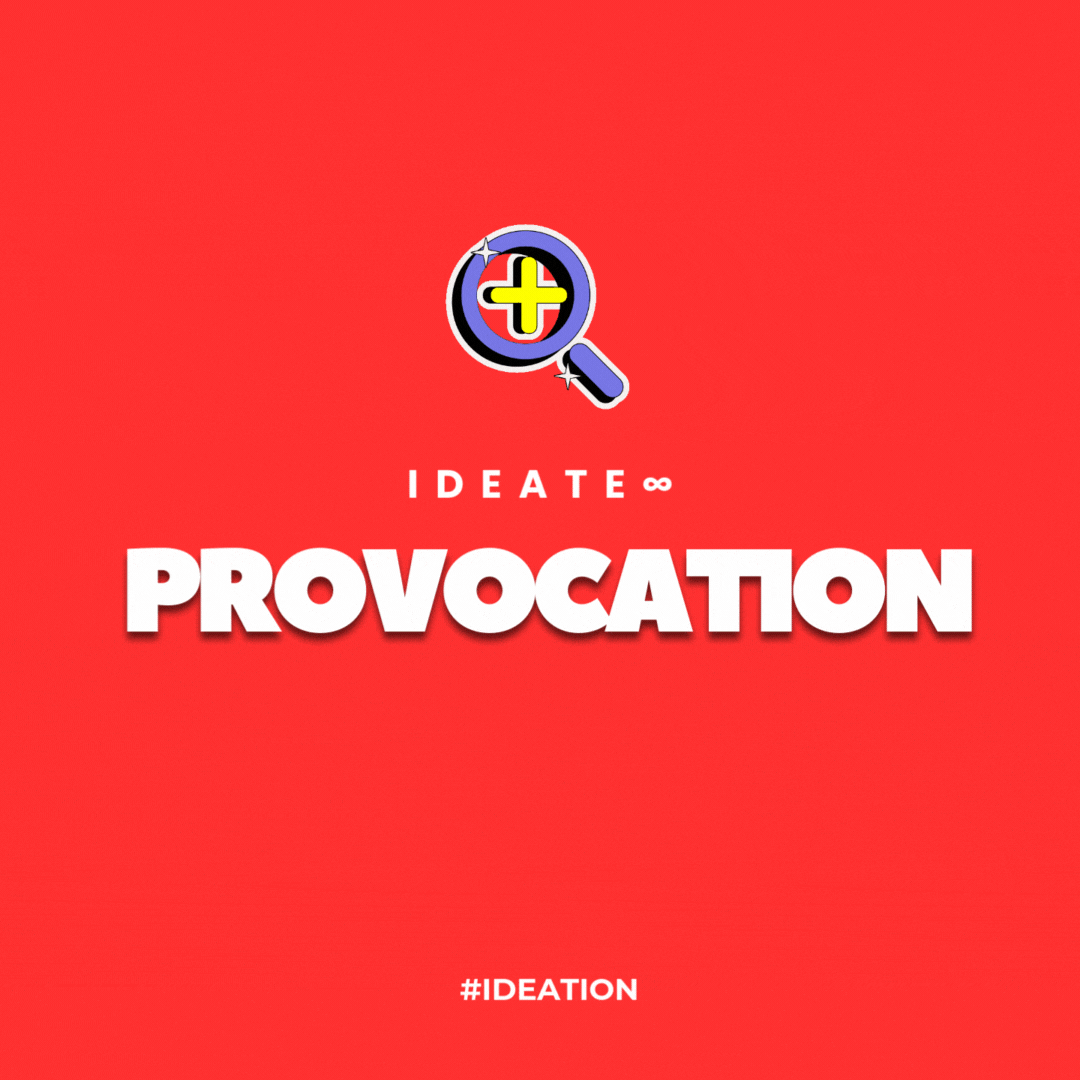Provocation (Lateral Thinking): Disrupting Logic to Unlock Corporate Innovation
Introduction
Corporate innovation often follows well-worn paths. Strategy sessions center around KPIs. Ideation is filtered through feasibility lenses. And good ideas die quietly when they don’t fit within quarterly targets or legacy systems.
But true innovation requires uncomfortable thinking—ideas that don’t make sense until they do.
Provocation, a core technique of Lateral Thinking developed by Edward de Bono, is designed to jolt teams out of linear thought patterns. At Hangar 75, we use Provocation within the IDEATE∞ platform to disrupt logic, challenge orthodoxy, and stimulate ideas that conventional strategy sessions could never reach.
What is Provocation (Lateral Thinking)?
Provocation is a method that deliberately introduces absurd or illogical statements to spark unconventional thinking. These statements are not meant to be “true,” but to act as springboards for new perspectives.
Examples include:
“Airplanes should land upside down.”
“Banks should encourage fraud.”
“Retail stores should charge people not to enter.”
“Hospitals should hire healthy people, not sick ones.”
After introducing the provocation, teams explore how that could somehow work—and what underlying insights or ideas emerge in the process.
It’s not brainstorming. It’s not strategy. It’s structured disruption.
Why Provocation Works in Corporate Innovation
Most corporate teams are bound by logic, efficiency, and precedent. While that’s helpful for execution, it’s a barrier to innovation. Provocation works by breaking those mental constraints.
By temporarily suspending the need for logic, teams access new creative spaces—many of which contain strategic gold.
It’s particularly effective for:
Reimagining entrenched processes
Generating ideas in highly regulated or slow-moving industries
Stimulating innovation fatigue
Discovering new product, pricing, or business model concepts
Pros of Provocation
Disrupts Groupthink: Breaks linear, convergent ideation cycles
Reveals Assumptions: Surfaces limiting beliefs in strategy or culture
Inspires Bold Ideas: Encourages teams to explore radical alternatives
Accessible to All Roles: Doesn’t require deep technical or industry expertise
Quick to Deploy: Can yield results in a single 30-minute session
Cons of Provocation
Needs Skilled Facilitation: Without guidance, absurd ideas remain absurd
Cultural Pushback: May be dismissed as unserious in traditional settings
Ideas Need Translation: Raw outputs must be reframed into real-world application
Best Used Sparingly: Can fatigue teams if overused
Requires Psychological Safety: Teams must feel safe to say the “wrong” thing
Illustrative Example: Unlocking Innovation in Pharma Compliance
A global pharmaceutical company engaged Hangar 75 to rethink internal compliance reporting—an area bogged down by complexity and low engagement.
In a Provocation Session, we used the statement:
“Employees should be rewarded for reporting fewer compliance incidents.”
Initial laughter gave way to serious reflection. The team considered:
How could we prevent incidents before they happen?
What if employees could self-audit or simulate scenarios?
Could we gamify preventive behaviors, not just reports?
The provocation led to the creation of an interactive compliance simulator with behavior-based nudges—later piloted with a 35% increase in pre-incident risk reporting.
The idea would never have emerged through conventional logic.
Where Provocation Fits Within the IDEATE∞ Platform
Within IDEATE∞, Provocation is a featured creative disruption tool. It’s used to:
Break cognitive deadlock during ideation sprints
Enrich innovation challenge responses with lateral prompts
Encourage risk-tolerant, edge-case thinking
Generate raw creative material for further refinement
Reframe problems by reversing assumptions
IDEATE∞ provides a provocation generator, combining industry-specific logic breaks with wildcard statements. Users can run sessions solo or as a team, with AI guiding the reframing process into viable concepts.
We often pair Provocation with Dark Horse Ideation or Chaos-Driven Ideation to maximize lateral thinking depth.
The Strategic Role of Provocation in Innovation Portfolios
Provocation is ideal for:
Disrupting incremental innovation cycles
Surfacing radical product or business model ideas
Challenging institutional inertia
Creating bold options for executive strategy reviews
Reinvigorating fatigued innovation teams
It’s not a tool for prioritization or refinement—but it’s unmatched at the beginning of the creative process, when you need to break free from “what we’ve always done.”
Final Thoughts: Innovation Doesn’t Begin with Logic
The best corporate innovations often begin as bad ideas—until someone reconsiders the logic. Provocation is a disciplined way to explore those “bad” ideas, not as jokes, but as portals to a better future.
At Hangar 75, we use Provocation within IDEATE∞ to ensure teams don’t just think outside the box—but question why the box existed in the first place.
Ready to Unlock Transformational Ideas?
This is just one of the many powerful techniques embedded within IDEATE∞, Hangar 75’s enterprise-grade ideation engine. Whether you’re launching a new product, solving complex challenges, or evolving your innovation strategy, IDEATE∞ helps you generate, enrich, and prioritize high-impact ideas—fast.
👉 Explore how IDEATE∞ can be deployed inside your organization.
Schedule a no-risk, personalized demo and discover precisely how IDEATE∞ can drive strategic advantage for your organization.

